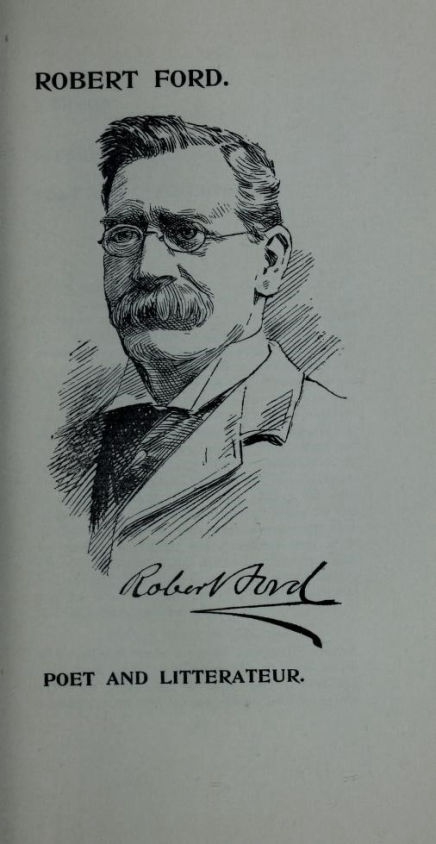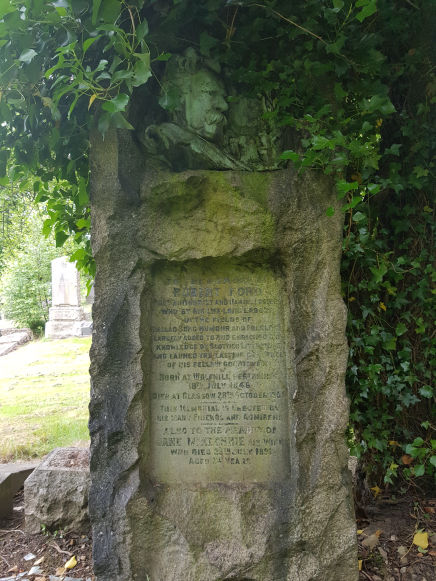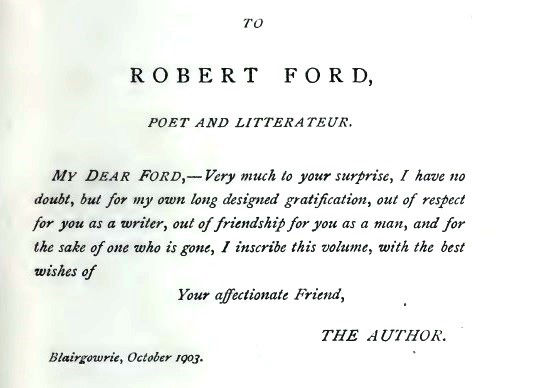In his spare time, however, he penned a sequence of extremely popular books. These include collections of poetry, humorous stories and children’s songs, as well as edited collections of William Miller, Robert Burns and Sandy Rodger. He was an uninspired poet in his own right, although his work was very much in the fashion of the times – similar to countless pieces that appeared in Whistlebinkie and other collections. This verse, from The Auld Beech Tree, published in his first collection, Hame-Spun Lays and Lyrics, is typical:
The Shades o’ gloamin’ saftly fa’
Ower meadow loch, an’ fell;
The reivin’ craws flee craickin’ hame,
The birds sing in the dell;
The weary herd, wi’hopefu’ heart,
Gangs hirpin’ ower the lea,
An’ lown I lie, an’ muse aneath
The auld beech tree.
Despite his own fairly modest gifts as a writer, however, Robert was an excellent editor and collector, and his works, published latterly by Alexander Gardner of Paisley, were best-sellers both at home and abroad. Dryerre notes that his collection of anecdotes in the fashion of Dean Ramsay, Thistledown, inspired an expatriate Scot in Klerksop, South Africa, to name his estate after it. Ford was also particularly interested in children’s lore, and his Ballads of Bairnhood (1894) – dedicated ‘To my own five motherless children, for whose entertainment, in joy and in sorrow, most of the pieces have been read or sung’ – and his Children’s Rhymes, Games, Songs and Stories (1903) were especially popular. This particular book drew praise from contemporary authors J. M. Barrie and Alexander Anderson who predicted “it will be precious to the heart of many a mother yet who at the present moment is nursing her doll at the innocent joy of infancy”.
There are interesting snippets of folksong and folklore in several of Ford’s collections. For example, Children’s Rhymes, Games, Songs and Stories contains an unusual example of an early mystery play, The Goloshans (supposedly ‘The Galatians’) common in the west of Scotland, and Thistledown has an intriguing version of an international folktale type known in the north of Scotland, ‘The Professor of Signs’. However, Ford’s main contribution to folksong scholarship comes not in two fairly standard works – Song Histories (1900) and Auld Scots Ballants (1889) but in his Vagabond Songs and Ballads of Scotland (first published in 1899) a collection of around 150 Scottish folksongs with annotations and fully transcribed tunes.
Vagabond Songs is, in fact, a meticulously edited and more genuinely traditional collection than any of the other various derivative and repetitive volumes of the same type. However, its limitations should also be made clear. Unlike Greig or Duncan, Robert was an armchair collector. As he notes in his introduction to the second edition: ‘For a good long time I have practised the conceit of noting down these vagabond songs and ballads when and wherever I was favoured with the opportunity of hearing them. Some I secured through correspondence. Some from obscure publications. On the invitation of the proprietors of the People’s Journal, a selection of them recently appeared in the columns of that widely circulating periodical, with the result that I obtained fresh and interesting particulars about some, and additional verses to others.’
In fact, Robert was also regular contributor to the press at the turn of the century. The newspapers of the day encouraged a high standard of cultural and literary debate and many of the major writers of the Scottish renaissance contributed.


